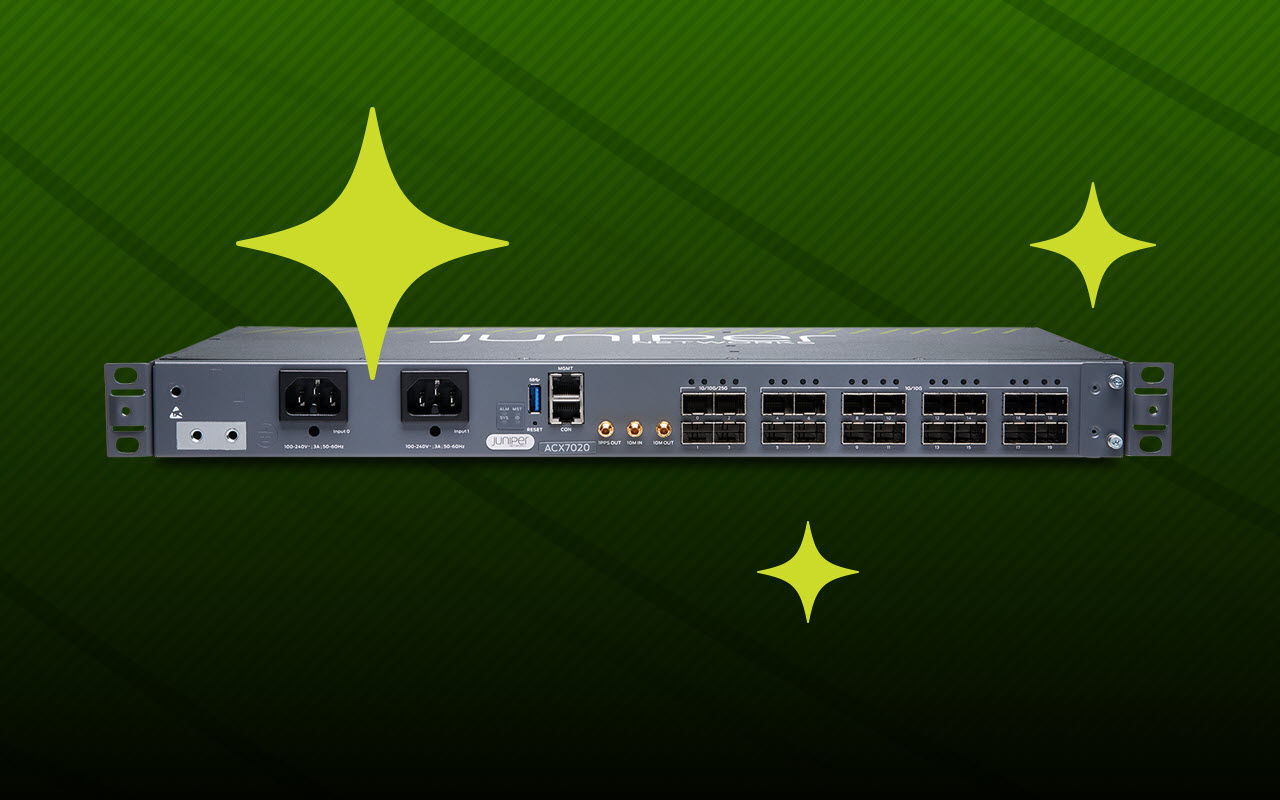As network usage grows, your data center must scale to accommodate increased network traffic with visibility to what’s going on and without compromising scalability, manageability and sustainability.
Organizations are moving beyond monolithic applications, adopting an agile IT approach to deploy applications more quickly in smaller steps and respond to requirements that can change rapidly. The application design favors virtualized workloads, such as containers and virtual machines, to support rapid shifts in capacity over time on a smaller set of physical servers.
Increasing Agility with IP Fabric Architectures
Traditional hierarchical data center network designs aren’t well suited to support these modern applications. As applications become more distributed, interprocess communication in a traditional monolithic application becomes an API call across the network. Thus, the network becomes integral to the application. These changes have many organizations replacing their hierarchical networks with flatter, highly interconnected data center fabrics to provide a predictable degree of latency between workloads.

In modernizing their data centers, customers are deploying the industry-leading, standards-based architecture of EVPN-VXLAN fabrics to meet both L3 and L2 network requirements. These open and standards-based protocols bring a wealth of new benefits: seamless interaction into multi-vendor environments, increased scale, distributed anycast IP gateways, multihoming that scales horizontally across many devices and interoperability with SDN controllers.
Fabric Automation and Visibility
Today’s networking solutions enable architects to introduce modern, agile fabrics in steps. This enables changes to be introduced with care and planning. For example, while many new fabric deployments begin with CLI-based device management today, architects are choosing solutions built to evolve to increasing automation and visibility levels.
Evolvability in the architecture design is essential. As the number of devices in the fabric grows, traditional ways of provisioning, configuration, monitoring and troubleshooting may not keep up. CLI-based device management can reach practical limits with its inherently manual setup. Thus, today’s architects choose equipment ready to work with central management, automation and analytics with rich APIs for automation along with telemetry with sub second capture. These design choices assure that the new architecture is agile and ready to work with central management, automation and analytics.
As the need for automation grows, scripting tools and automation libraries such as Ansible are good options as next steps. Some organizations prefer to use a purpose-built, centralized point of management that can abstract configuration complexity and orchestrate both the underlay and overlay elements of the fabric.
Analytics and Troubleshooting
How long does it take to identify and resolve an issue in the data center? If the answer is “longer than it should,” you are not alone. Many vendors have shared solutions that they claim will help, but many lock you in, which hurts existing and future integrations.
When the pressure is on for network engineers to show network innocence or find the problem, traditional management methods like SNMP and CLI polling have limitations of scalability and efficiency. Tooling is also important here. A strong solution must include support for a variety of telemetry collection methods, including asynchronous push models that can scale beyond traditional polling. Another key requirement is to correlate multiple data sources into meaningful status information, allowing the operator to see and react to problems more quickly than traditional approaches. Better yet, the tool should include built-in advanced algorithms and machine learning technology to establish operational benchmarks, determine anomalies and perform proactive corrective actions all on its own.
How Juniper Networks Can Help in Your Modernization
Juniper’s customers are modernizing their data centers to meet evolving needs for scale and agility with solutions that simplify operations. With our single switching line that features the Junos OS everywhere, automation begins with fabrics and can extend to workflows. Built with intent-based methodology, our solutions leverage mature standards and protocols such as BGP and EVPN-VXLAN to normalize data center and fabric operations.
The granularity of Junos telemetry provides rich data sets to our analytics tools, such as HealthBot. HealthBot aggregates large volumes of real-time telemetry data and correlates analytics to provide predictive insights across the network. The solution offers a programmable framework supported by open-sourced data pipelines and collected data ingestion.
Hands-on Tools
Intrigued? Do you want to get your hands on our new solutions and experience them for yourself? Join us on June 30th for our Data Center Toolkit Tuesday webinar to see the solutions in action and learn how to sign up for our free virtual labs.
In 14 minutes, our team will provide a guided, hands-on demo of Juniper’s data center labs and tools.
- Get free access to the Fabric Test Lab, Data Center Design Tool and NRE Labs.
- Find out how you can use one business fabric for all your L2 and L3 apps.
- Experience “see something, do something” visibility in action.
- Juniper vLabs: a web-based lab environment that lets anyone try products and features at any time, in a no-risk environment. Find pre-built topologies and guides to test drive our switching, routing, security, analytics and orchestration solutions. Visit vlabs.juniper.net.
- NRE Labs: an open source educational project to make network automation and the emerging discipline of network reliability engineering (NRE) accessible for everyone. Through short, simple exercises in your browser, you can learn the tools, skills, and processes that will put you on the path to becoming a Network Reliability Engineer. Visit nrelabs.io.
























